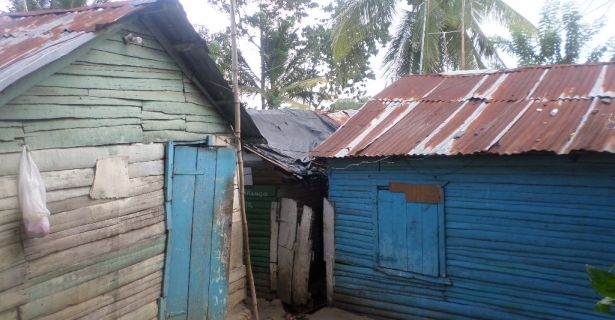Dara Gbolahan, MALD 2014, Empower Fellowship, Master’s of Law and Diplomacy, The Fletcher School.
I’m working in The Dominican Republic to measure the degree of food insecurity for populations living in bateyes in Puerto Plata and evaluate if a food cooperative would be a viable and effective solution. Bateyes are slums once used to house Haitian low skill sugar cane cutters near sugar cane fields. Even though most of these sugar cane fields no longer exist, people – the majority of which are Haitian descent – continue to live here in subhuman conditions with little to no access to clean water, electricity, or nutritious foods.
The majority of families in these community have very little income and those who do work, do not work very often. Due to political and racial tensions within the country, Haitians may not be legally employed. While there is recent legislation that has addressed this issue, the process of obtaining Dominican citizenship is both highly tedious and a conduit for corruption and discrimination. Resultantly, many people in these communities struggle to make ends meet working low paying construction jobs and unfortunately, prostitution.
In regards to access to food, I’ve made several observations through my research. First, most families rely on community corner stores called colmados. These colmados stock household necessities such as meat, beans, rice, and bread that one is able to buy in small quantities – small bags, cups, etc. These stores sell very little produce and what they do sell is very expensive, but much of their earnings come from soda, cookies, and candies.
You can see that this colmado advertises beans, chicken, beef, and pork as its primary foods and the only produce in the window are potatoes and yucca, neither of which are nutrient dense foods. While these stores definitely appeal to the needs of its customer base – calorie intensive and small quantity foods – they do not cater to communities’ nutrition needs.
I’ve found that most families buy from these colmados on a daily basis and for produce, rely heavily on food trucks that drive through the community during the week. These produce trucks sell a larger variety of produce than the colmados but at still at high prices. In order to buy both low priced produce and staple foods in large quantities, people must travel to the city and pay high transport costs to do so. There is a definite need for a solution that allows families in these communities better access to nutritious food.
However, my research has shown that perhaps more affordable prices isn’t the solution to this issue. While produce may not be available in the colmados, it is available in the food trucks that drive through the community and in the city markets. While it’s not an ideal situation – not having a market nearby – nutritious food is accessible, physically. Food is inaccessible economically, however. My research has shown that very few families have fixed incomes and the majority rely on credit to make daily purchases from the colmodas. Something needs to be done to expand access to employment in these communities and with the resulting income, these communities would be better able to access the existing market. However, it seems to me that any initiative to lower the price of food for these populations would be marginally successfully. This is because when you have nothing, 50 pesos is pretty hard to come by but 40 pesos is a challenge as well.

